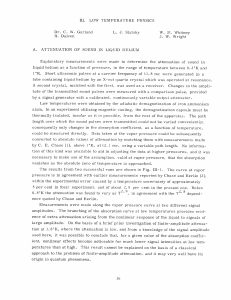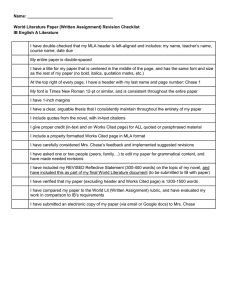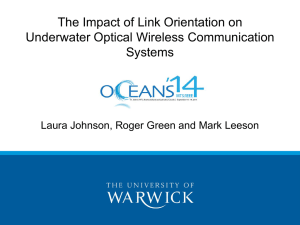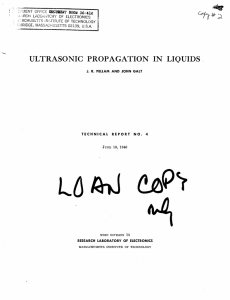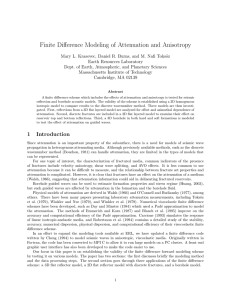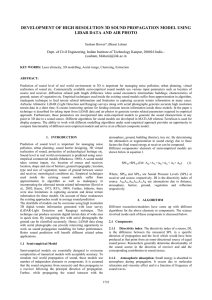III. LOW TEMPERATURE PHYSICS L. J. Slutsky
advertisement
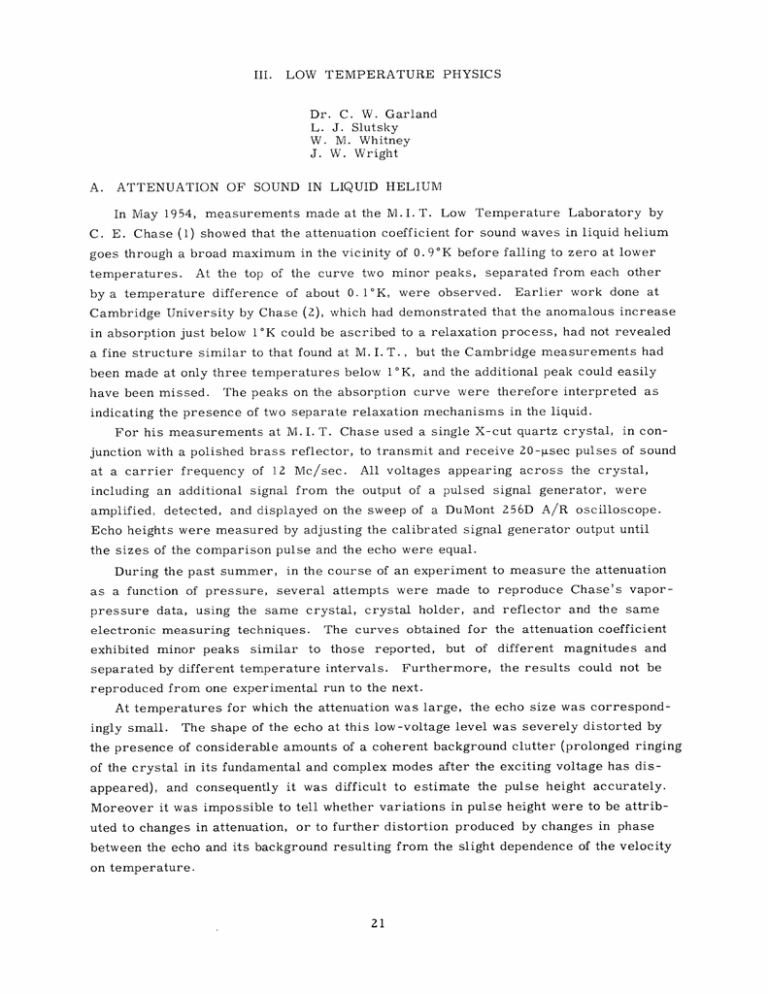
III. PHYSICS LOW TEMPERATURE Dr. C. W. Garland L. J. Slutsky W. M. Whitney J. W. Wright A. ATTENUATION OF SOUND IN LIQUID HELIUM Low Temperature Laboratory by In May 1954, measurements made at the M. I. T. C. E. Chase (1) showed that the attenuation coefficient for sound waves in liquid helium goes through a broad maximum in the vicinity of 0.9 0 K before falling to zero at lower At the top of the curve two minor peaks, temperatures. separated from each other by a temperature difference of about 0. 1°K, were observed. Earlier work done at Cambridge University by Chase (2), which had demonstrated that the anomalous increase in absorption just below 1 °K could be ascribed to a relaxation process, had not revealed a fine structure similar to that found at M. I. T., but the Cambridge measurements had been made at only three temperatures below 1°K, and the additional peak could easily have been missed. The peaks on the absorption curve were therefore interpreted as indicating the presence of two separate relaxation mechanisms in the liquid. For his measurements at M. I. T. Chase used a single X-cut quartz crystal, in conjunction with a polished brass reflector, to transmit and receive 20-[sec pulses of sound at a carrier frequency of 12 Mc/sec. All voltages appearing across the crystal, including an additional signal from the output of a pulsed signal generator, were amplified, detected, and displayed on the sweep of a DuMont 256D A/R oscilloscope. Echo heights were measured by adjusting the calibrated signal generator output until the sizes of the comparison pulse and the echo were equal. During the past summer, as a function of pressure, in the course of an experiment to measure the attenuation several attempts were made to reproduce Chase's vapor- pressure data, using the same crystal, crystal holder, and reflector and the same The curves obtained for the attenuation coefficient electronic measuring techniques. exhibited minor peaks similar to those reported, separated by different temperature intervals. but of different magnitudes and Furthermore, the results could not be reproduced from one experimental run to the next. At temperatures for which the attenuation was large, the echo size was correspondingly small. The shape of the echo at this low-voltage level was severely distorted by the presence of considerable amounts of a coherent background clutter (prolonged ringing of the crystal in its fundamental and complex modes after the exciting voltage has disappeared), and consequently it was difficult to estimate the pulse height accurately. Moreover it was impossible to tell whether variations in pulse height were to be attributed to changes in attenuation, or to further distortion produced by changes in phase between the echo and its background resulting from the slight dependence of the velocity on temperature. (III. LOW TEMPERATURE PHYSICS) The difficulty was resolved by using separate crystals to transmit and receive. With the background clutter from the input signal no longer present on the oscilloscope sweep, it was possible to measure the height of the transmitted pulse with much greater precision. There was no noticeable pulse distortion, even for the smallest signals, and the results obtained could be reproduced. They showed no additional peaks in the attenuation curve, and within experimental error agreed with Chase's Cambridge values. seems certain, therefore, that the presence of the second peak in the M. I. T. was a spurious effect, and that as the temperature falls below 1 'K, It now results the attenuation coef- ficient rises smoothly to its maximum value. W. M. Whitney References Chase and M. A. Herlin, Phys. 1. C. E. 2. E. Chase, C. Proc. Roy. Soc. A220, Rev. 95, 116 (1953). 565L (1954); 97, 1447 (1955).
